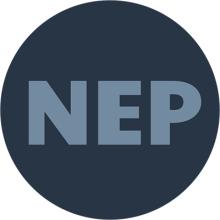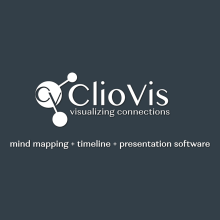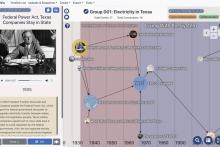The Keys to Understanding History: Unlocking Digital Timelines
This project started out with a simple idea: From my original proposal, we noted that “Current historical timelines are not interactive, nor do they enable students to understand connections between different events. They are good at showing chronology, but are not good at illustrating how specific events are influenced by a whole host of different historical factors.”
The final product of my PTF was a prototype of a now robust online platform called ClioVis that has since been used by over 6,000 students across the United States, including UT-Austin, UT-San Antonio, UT-Rio Grande Valley, University of Michigan, Boston College, Stanford and beyond.
In the current version of the software, students not only build interactive “connecting” timelines, the software also functions as an online learning platform, where users can communicate, present, and collaborate on classroom projects virtually. The platform has been used disciplines from ranging from STEM (where it’s been used to created “pathways” instead of timelines) to disciplines across the Humanities (history, literature, anthropology) as well as in the School of Architecture, School of Communications, and College of Fine Arts. Students can embed their timelines in websites to create public facing projects or use them to study course content.
Public facing timelines that students have created have been featured by Not Even Past and Digital Humanities Now. For instance, the Black Lives Matter Timeline has been made available through the National Council on Public History to educators across the nation, who use it with their students to better understand the historical context for the summer of 2020. We’ve also applied for grants and additional funding to keep this project moving forward.
Impacts from This Initiative

Critical Literacies Project: ClioVis (UT System P20 Projects)
The UT System works with internal and external partners to foster critical literacies in students across the P20 continuum. UT institutions work to cultivate these literacies in students across traditional and emerging academic disciplines, and through partnerships and programs in PK12 schools, communities, and business and industry across Texas.

Thinking Critically with ClioVis (Pedagogy Playground)
Dr. Lindsey Passenger Wieck, faculty at St. Mary's University in San Antonio, Texas, reviewed ClioVis for the pedagogy blog Pedagogy Playground: Innovative Teaching in Higher Education in February 2020. The review discusses her experiences with ClioVis during and after a workshop led by Bsumek, and goes on to highlight the features of the tool which she finds most compelling: interactivity, collaboration, ease of use, exportability, and applications outside of coursework.

Interview with Dr Erika Bsumek, the creator of ClioVis (Not Even Past, UT Department of History)
In September 2020 History faculty Adam Clulow interviewed Erika Bsumek for Not Even Past, the digital magazine of the UT Department of History, to discuss the development, use, and impacts of ClioVis, the digital timeline visualization tool created as part of Bsumek's PTF Initiative. This article is part of a wider series that explored how teachers and students across the History department, the university and world more generally responded in new ways to the unprecedented classroom environment faced in a time of global pandemic.

ClioVis Digital Timelines: Visualizing Connections
Erika Bsumek built the ClioVis digital timelines platform for instructors and students to build interactive digital timelines as part of their coursework or scholarly initiatives. The platform has been used by thousands of students across the US, including throughout the UT System, University of Michigan, Stanford, and others, in both humanities and STEM disciplines, as well as for research initiatives.

Editor's Choice Award: ClioVis Description, Origin, and Uses (Digital Humanities Now)
"ClioVis: Description, Origin, and Uses," a September 2020 article from Not Even Past: the digital magazine of the UT Department of History, was awarded Editor's Choice by the online aggregate Digital Humanities Now.

ClioVis: Visualizing Connections (Review, Journal of American History)
Dr. Jason Heppler of George Mason University reviewed ClioVis, the digital timeline visualization tool developed by Erika Bsumek, in the March 2024 issue of the Journal of American History. According to an excerpt from the review:

Digital Projects Enrich Undergraduate Research: ClioVis and Epoch (History Department News)
ClioVis, the digital timeline visualization tool created by Erika Bsumek as part of her PTF Initiative, was highlighted in UT Department of History News on May 25, 2020 by Dr. Megan Raby. The article explored the ways that ClioVis and Epoch, an initiative by History faculty Adam Clulow, are being used to create undergraduate research opportunities for UT liberal arts and history students.

ClioVis: Kendra Scott WEL Female Founder Competition Semi-Finalist and Crowd Choice Winner
The Kendra Scott Women's Entrepreneurial Leadership Institute (KS WELI) held the inaugural Female Founder Pitch Competition in October 2021.

The Art of Mapping History (Life and Letters)
Life and Letters, the print and digital magazine of the UT College of Liberal Arts, featured ClioVis, the digital timeline visualization tool developed by Erika Bsumek's PTF initiative, in their November 2023 issue.

